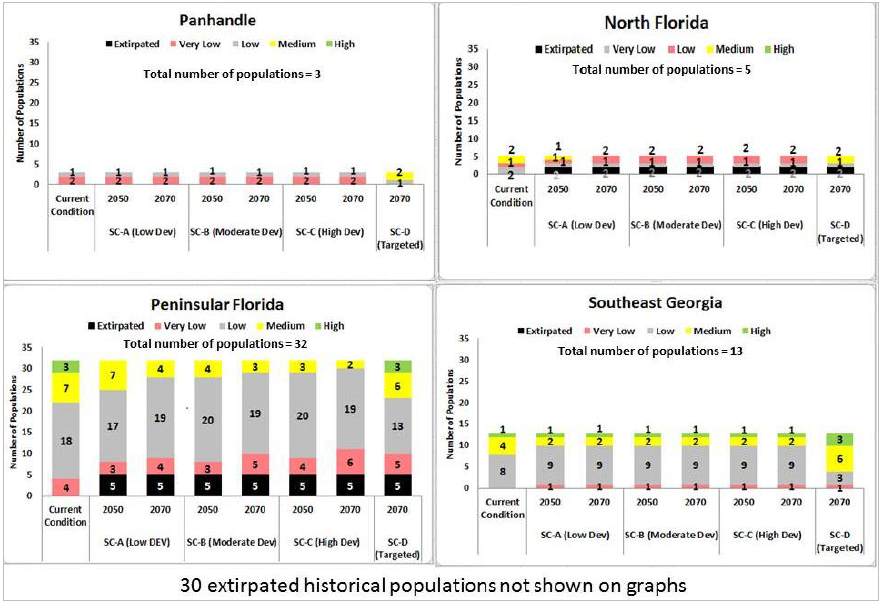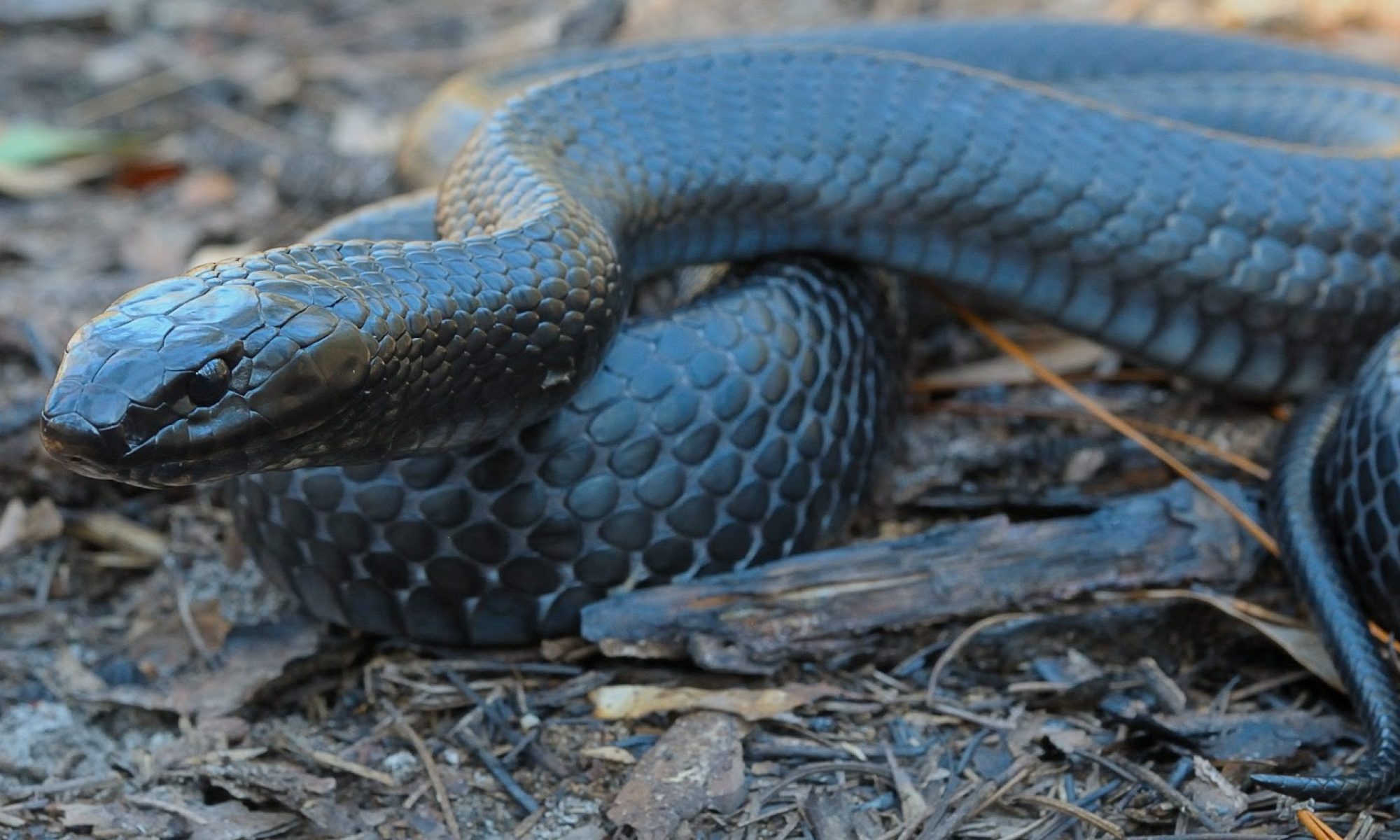In the current condition, representation and redundancy are limited because there are no high to medium resilient populations in the Panhandle region, however the other the regions have one high to ten medium resilient populations. In the future, ecological and genetic representation (north-south and east-west gradients) decrease in Scenarios B and C (high or medium resilient populations are absent from the Panhandle and North Florida regions), and the redundancy of high to medium resilient populations is considerably decreased from the current condition (Figure 33). Most notably for Scenarios A, B and C no highly resilient populations remain in Peninsular Florida, medium resilient populations are lost by 2070 (Scenario A) in the North Florida region, and high to medium resilient populations remain absent from the Panhandle (Figure 33). Redundancy of resilient (high to medium) populations is lost in the North Florida region. Furthermore, all island populations of eastern indigo snakes are likely lost (with the possible exception of CF 1-14, see Martin et al. 2018) by 2050 due to both sea level rise and urbanization. Although the ecological and genetic uniqueness of island populations of eastern indigos has not been studied, these population losses exemplify further declines in representation and redundancy for the species.

